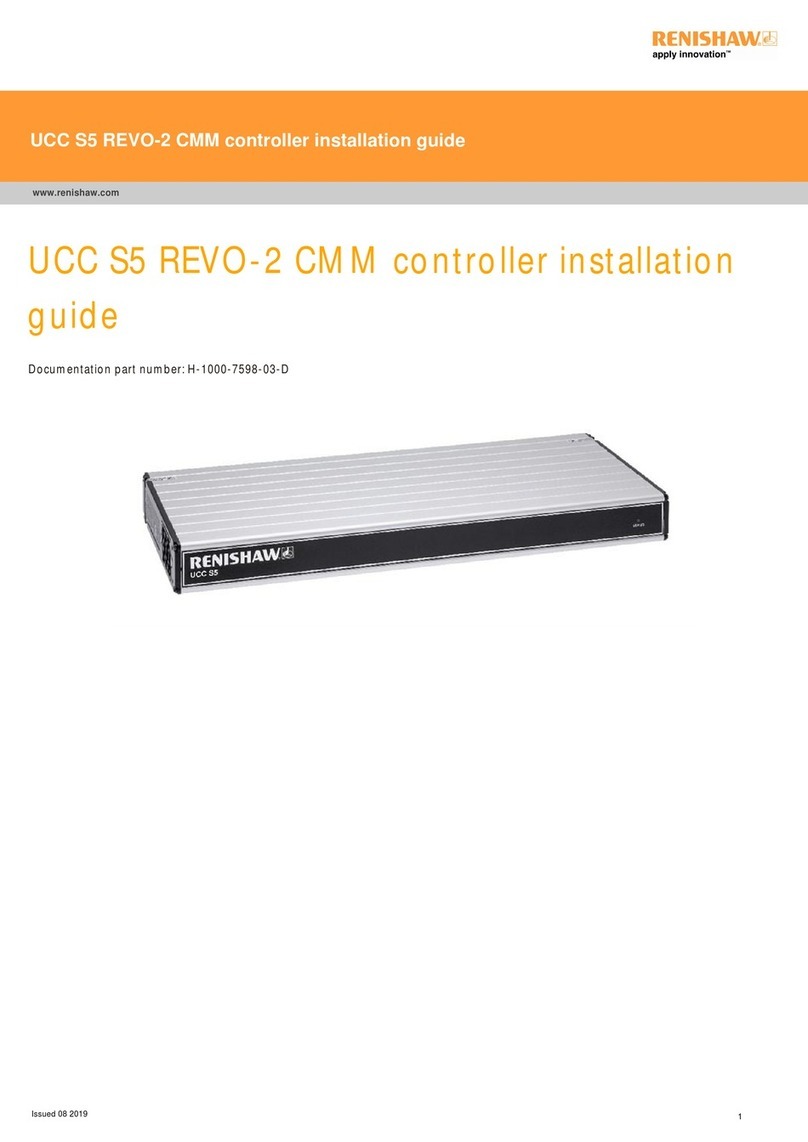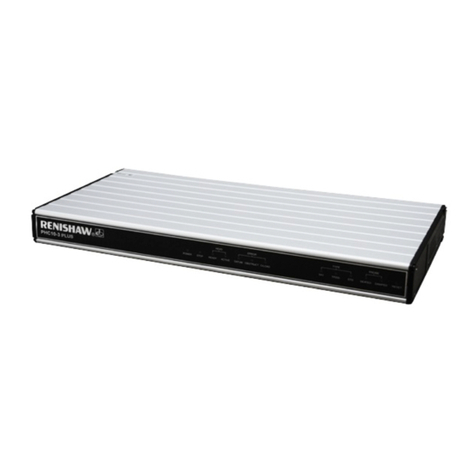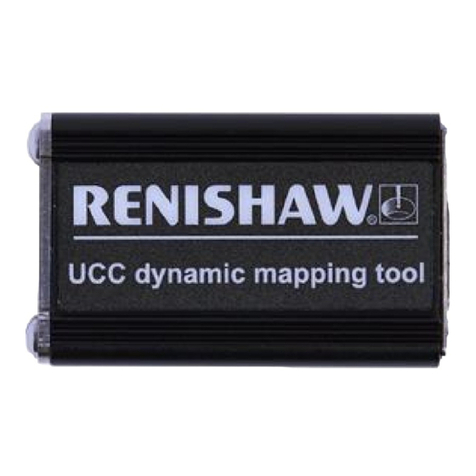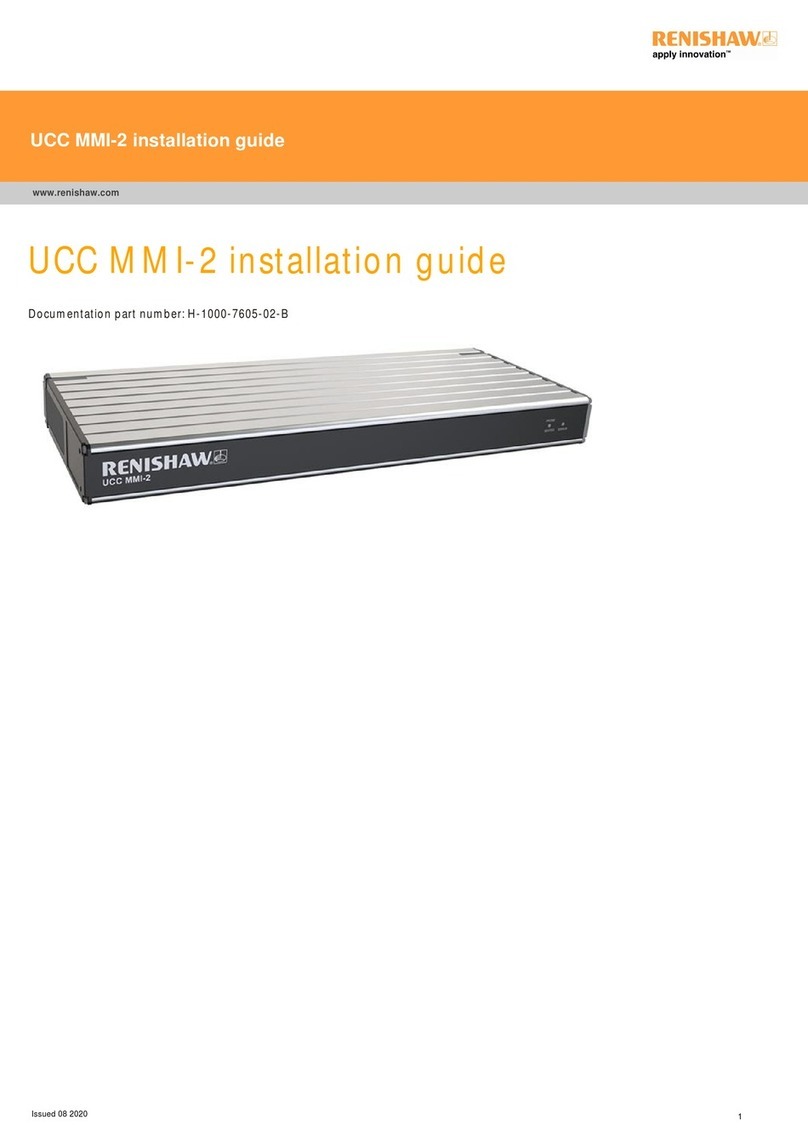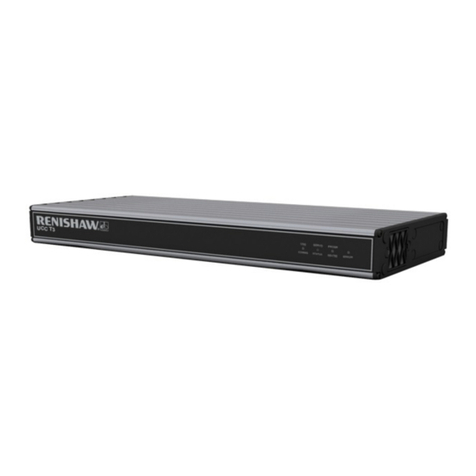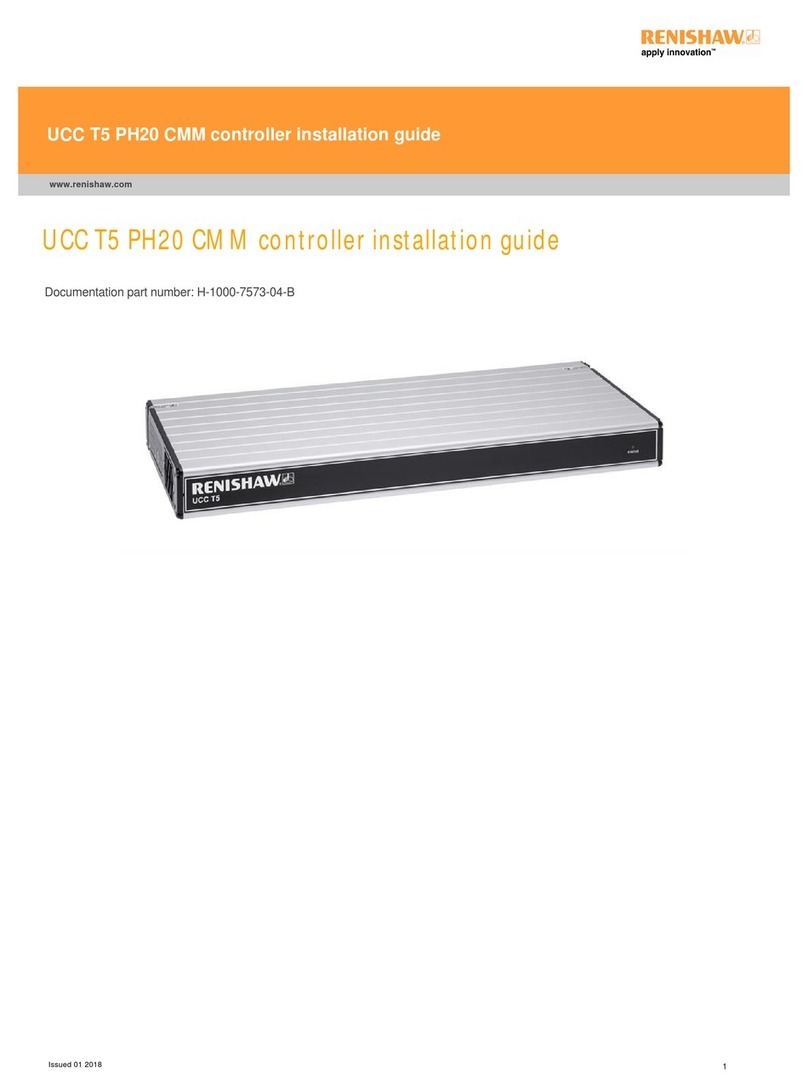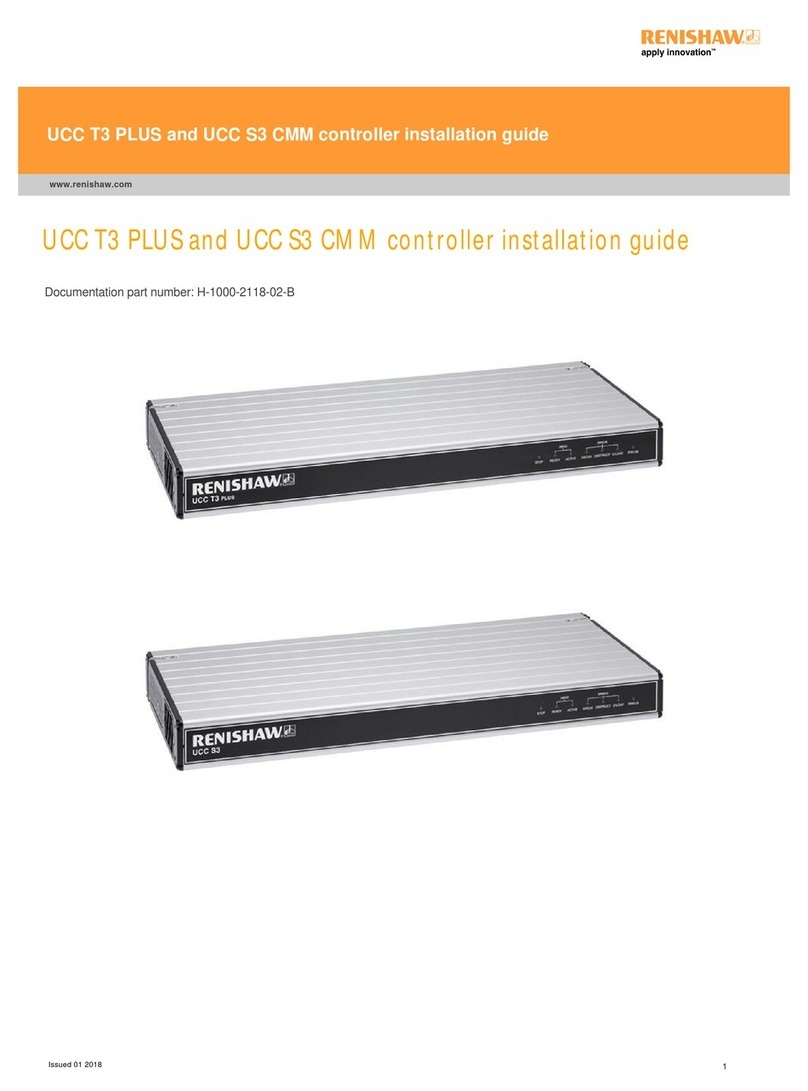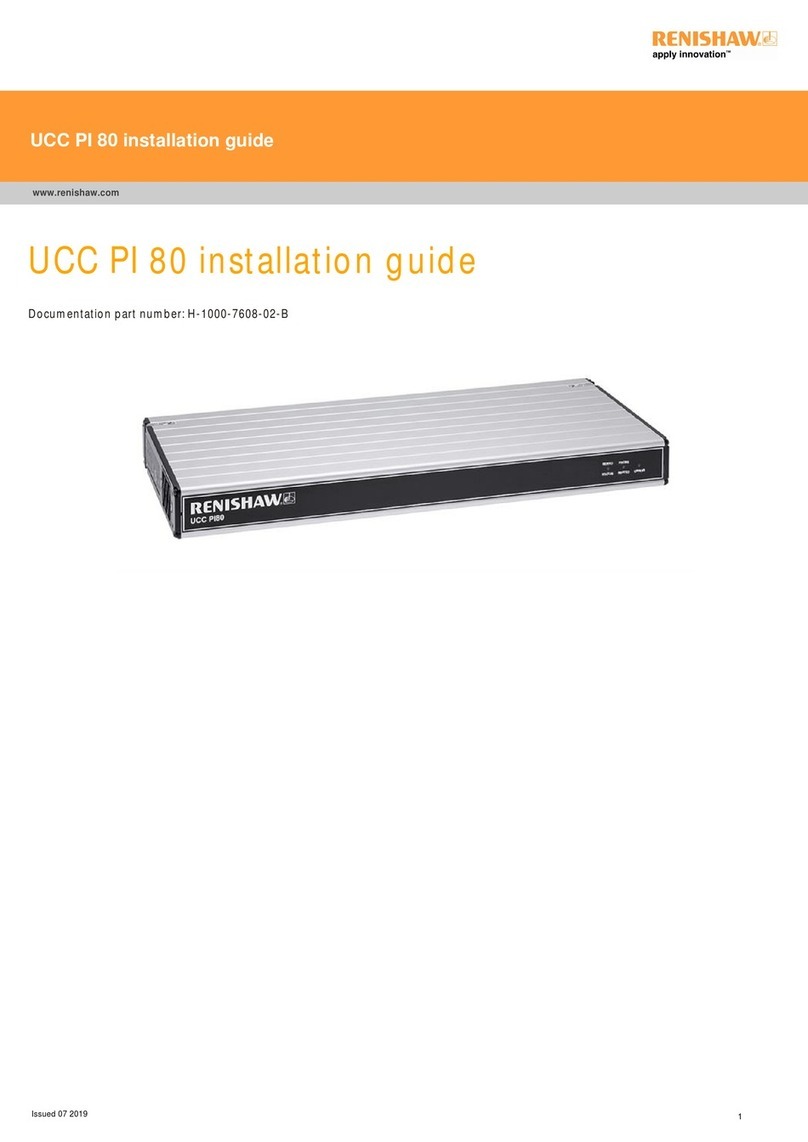
ECdeclarationofconformity
RENISHAW plc of New Mills, Wotton-under-Edge, Gloucestershire, GL12 8JR, England declares that:
1. We are the manufacturers of the equipment identified by the following particulars:
2. The equipment complies with the protection requirements of directive 89/336/EEC as amended.
3. The equipment conforms to the following standards -
The full EC declaration of conformity is held in the Renishaw technical file. A copy is available on
request.
Equipment type: Manual control unit
Model: MCU1 / MCU5
BS EN 61326:1998/ Electrical equipment for measurement
A1:1998/ A2:2001/ Control and laboratory use
A3:2003 EMC requirements Immunity to annex A - industrial locations.
Emissions to class A (non-domestic) limits.
BS EN 60204-1: 2006 Safety of machinery - electrical equipment of machines -
Part 1 General Requirements.
Renishaw plc declare that the product:
has been manufactured in conformity with the following standards:
and that it complies with the requirements of the following directives:
Name: MCUlite-2
Description: Manual control unit
BS EN 61326-1:2006 Electrical equipment for measurement,
control and laboratory use
- EMC requirements -
Part 1: General requirements
Immunity to Table 2 - industrial locations.
Emissions to Class A - industrial locations.
BS EN 60204-1: 2006 Safety of machinery - electrical equipment of machines -
Part 1 General Requirements.
2004/108/EC Electromagnetic compatibility (EMC)
2006/95/EC Low voltage
Pa
e 4 of 31MCU1, MCUlite-2 and MCU5 user's
uide
02/01/2013file://C:\TEMP\~hhC0D2.htm
